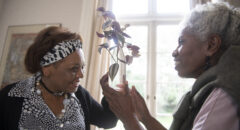
People typically need some form of elder care as they age. All too frequently the quality and location of that care is segregated along economic and racial lines. Nursing homes have especially evidenced this trend over the past four decades. The proportion of white elderly in care facilities has steadily declined as the minority proportion steadily increases.
In general, residential care facilities in the United States are shrinking in size and popularity as their residents are becoming proportionately more Black, more Hispanic, more Asian, and less white. For example: between 1999 and 2008, the number of elderly African American nursing home residents increased 10.8 percent. During the same period, the number of White nursing home residents declined 10.2 percent.
MUST READ: The Hidden Costs Of Caregiving
The nationwide trend, reflected in metropolitan areas from New York to Los Angeles, results from changing demographics and disparities in what people can afford. To fully appreciate the shift and its significance we must first briefly examine elder care in the United States.
Presently 34.7 million adults (16% of population) are caregivers to the elderly. Women account for 66% of caregivers and while men may be sharing in caregiving tasks more than before, women still shoulder the major burden of care. The potential care-recipient population continues to expand rapidly. There are 76 million US baby boomers—those born between 1946 and 1964—and the oldest of them turned sixty-five in 2011. During the next nineteen years roughly 10,000 people each day will turn 65.
By 2030 the Census Bureau projects that 20 percent of the US population will be sixty-five or older, up from 13 percent today.







